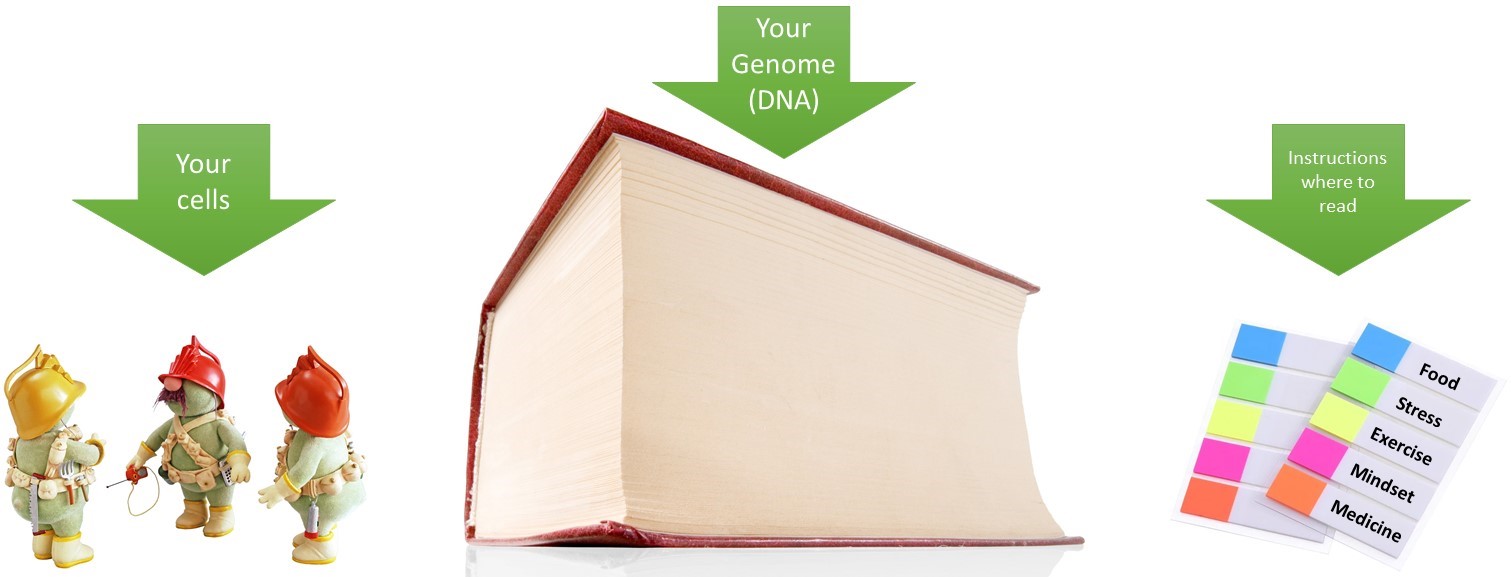It's in your genes
There's an amazing book titled "The Jungle Effect" by Dr. Daphne Miller where she describes how some specific regions of the world show very few cases of diabetes, colon cancer, heart disease and depression and how this is connected to the diet people follow in the region. What is even more impressive is that diets in places where genes have a predisposition for a specific disease are tailored to fight that one specific ailment, basically erasing it from the health issues there.
You probably know what Hippocrates, the father of medicine, said: "let food be thy medicine and medicine be thy food"; this phrase is more than just something cool to post on Instagram.
For example, the Mexican tribe of Tarahumara is super poor and lives on a diet of mainly carbs all day, every day; so how come they have a super low incidence of diabetes? Well, their carbs are slow-releasing and have a low glycemic index. Also, running ultra-marathons for fun will help with that cause. So let's go to Cameroon, where that genetic group shows a high risk of colon cancer but shows very few actual cases. Well, people in that part of Africa eat lots of fruits and veggies which are high in fiber; compare that to simple carbs and low fiber in the US, where a lot of black Americans show a higher proportion of colon cancer than the rest of the population.
You see, your genome is a very complex instructions manual. The cells in your body will carry out instructions to build, repair, defend, and change depending on which part of the manual they read. You must understand that the food you eat, the habits you have, and even your mindset will direct attention to specific parts of your DNA.
Here's me trying to explain this in an oversimplified way:
So how should you think about diet based on your DNA?
These are some of the things you can learn by reading your genome:
If your body is better built to work better with a diet high in carbohydrates, high in fat, or balanced
If you are more likely to get certain diseases which can be prevented with diet and exercise
If you are more likely to have certain food intolerances
Know which micro-nutrient deficiencies you may be prone to have
A tendency for eating behaviors such as snacking, over-eating, having a sweet tooth, or not feeling full when eating
Once you have a map of your genome it is still important to consult a nutritionist to know how many calories you really need and which habits you need to change as well as the best way to go about them. After going over your genetic traits, life habits, and health goals, your diet should look something more or less like this (this is just an example):
- Type: Low-carb
- Energy needs: 1,200Kcal / day
- Macro breakdown: 20% protein, 25% fat, 55% carbohydrates
- Supplements needed: Omega 3, B12, D, K, & Calcium
- Avoid: Coffee
- Watch out for: LDL levels and blood sugar levels
After setting up the diet and following it for a few months, the habit will train you to identify how your ideal diet looks like. This added with a little bit of common sense will allow you to make smart decisions even when you are in difficult situations like parties, flights, or at a buffet with your friends.
What about your DNA and training?
You will process different types of stress with a varying degree of efficiency depending on your genetic background. After getting a profile, you will be able to know:
Know if you are a natural cardio machine, better suited to strength training, or a little bit of both
If you are at a higher risk of being obese
Your natural metabolic rate
Your probability of having a regular or low VO2 Max (for men)
What physical problems you may present due to lack of exercise
After knowing how your body is made of, you will be able to take this to a personal trainer and design a program which will give you the best results in the shortest time and keep you as healthy as possible. Thinking about it in terms of cars, you wouldn’t take a Jeep to race in YAS Marina Circuit and a Ferrari off-road, right? By knowing your genotype and concentrating on stimulating a positive response, you can get in the way to building your best possible version.
An example of a training program may look like a combination of weight training with some HIIT and cardio with the following characteristics:
- Do lots of: Weight training
- Include some: Moderate aerobic training
- Watch out for: Obesity and high blood pressure. This is why you must do the aerobic part
To conclude.
Having a clear map of what will work better for you can avoid a lot of frustration and save you time. Instead of trying to see which diet sticks or wonder why 2 training sessions a day don’t get rid of the love handles, try a method which will point you out in the right direction. Why walk around a city with an old school map when you can just as easily have a real-time GPS?
Let me know if you're interested in getting this genetic profile, which is part of my business now. Every test includes an interpretation of the results and comes with diet and exercise recommendations. If you want to take it to the next level, we can also make the food for and send it ready to eat. For training the right way we can send a personal trainer to go through the right exercises for you or write a program for your next endurance race, just give me a call or even schedule a meeting on the button below.
Stay healthy,
Coach OM
